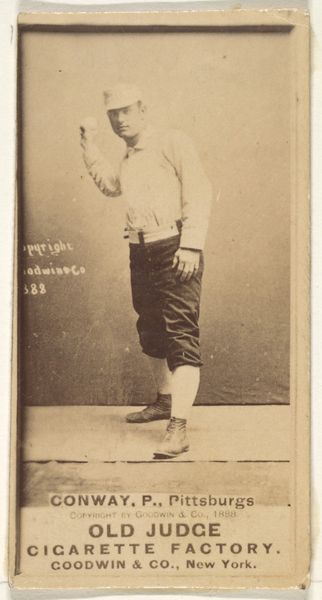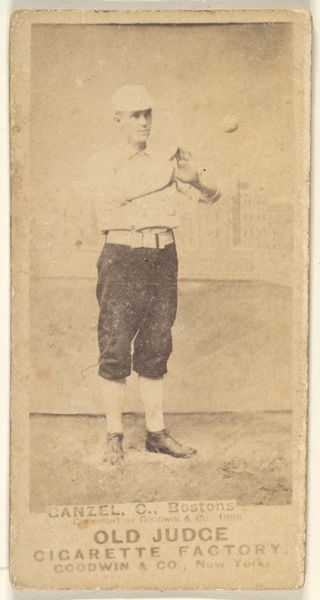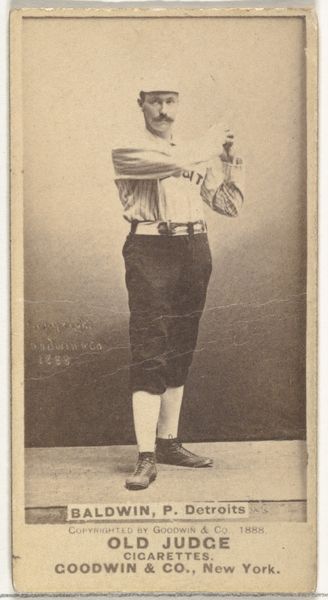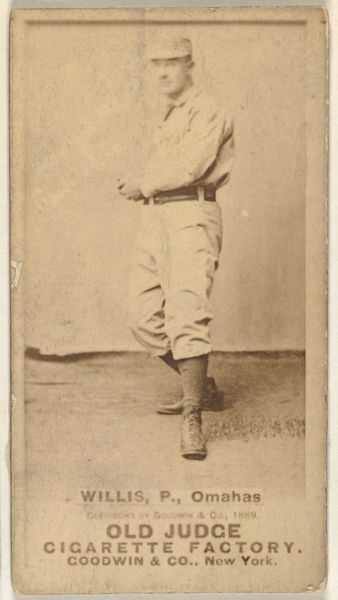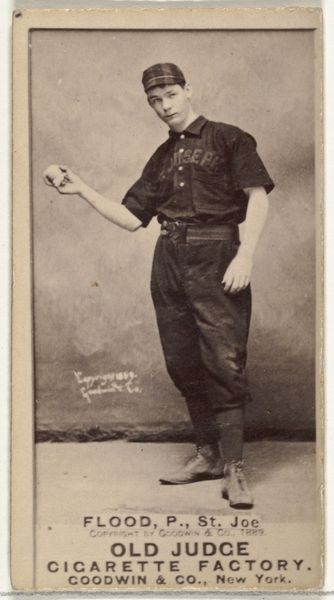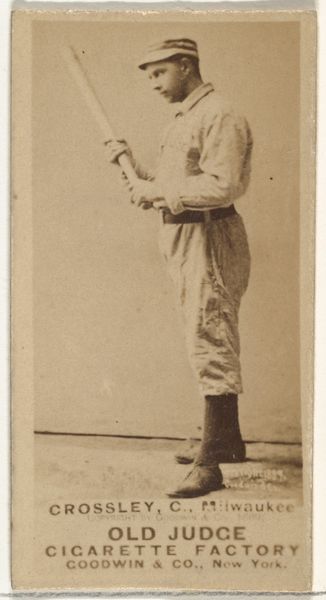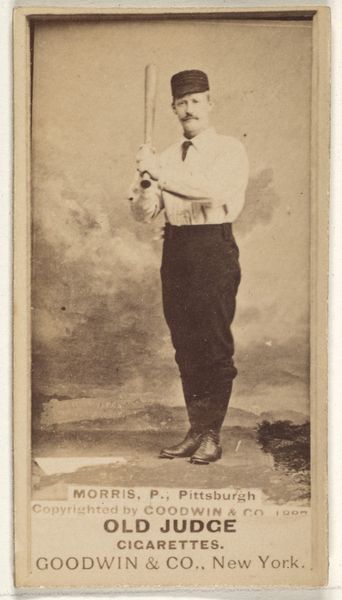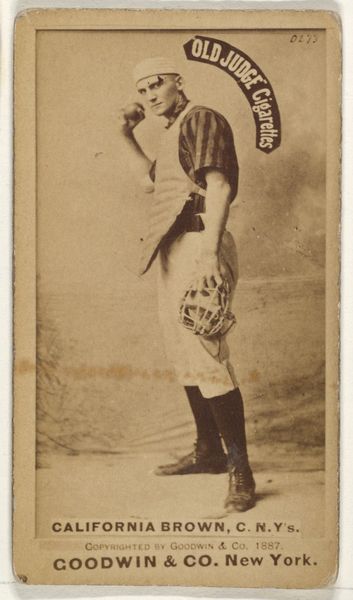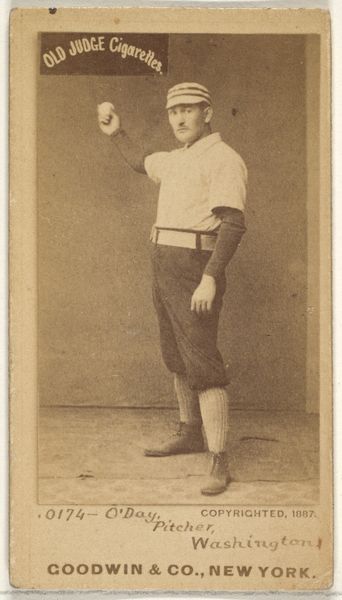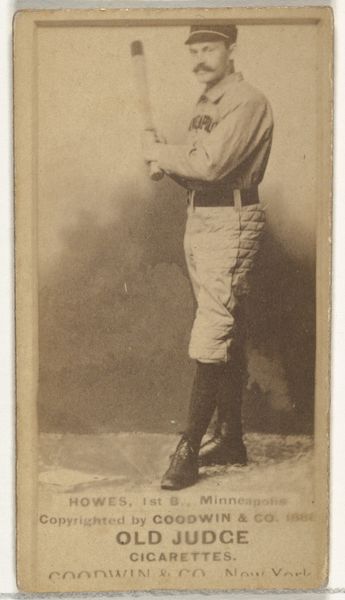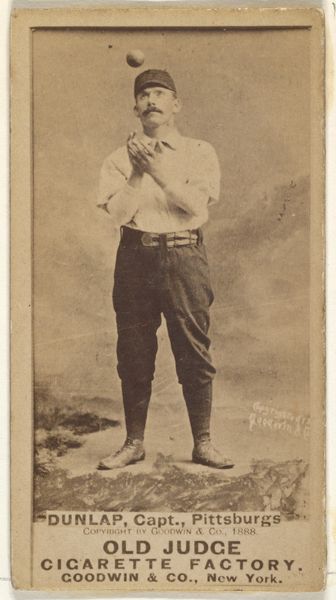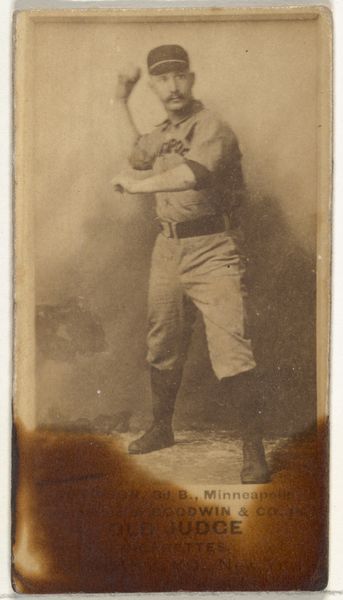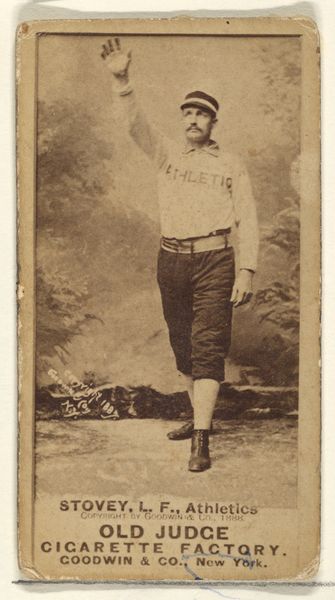
James Laurie "Deacon" White, 3rd Base, Detroit Wolverines, from the Old Judge series (N172) for Old Judge Cigarettes 1887 - 1889
0:00
0:00
print, photography, albumen-print
#
portrait
#
toned paper
# print
#
baseball
#
photography
#
men
#
athlete
#
albumen-print
Dimensions: sheet: 2 11/16 x 1 3/8 in. (6.9 x 3.5 cm)
Copyright: Public Domain
Editor: Here we have an albumen print dating from 1887 to 1889, from the Old Judge series, featuring James Laurie "Deacon" White. It's a baseball card, really, with the figure posed against a neutral backdrop. What I find striking is the rigid formality, juxtaposed against the casual nature of baseball. How do you interpret this work? Curator: The Old Judge series is so compelling. On the surface, it's a baseball card, part of a marketing campaign by a cigarette company. But when you consider the context, these cards document the rise of professional baseball, a moment where the game was becoming increasingly commercialized and racialized. What stories do you think this image is hiding? Editor: That's a great point about racialization! I hadn’t considered that directly, though now I see the very limited representation inherent in these cards. This image speaks volumes about who was – and wasn't – deemed worthy of visibility. It makes me wonder about the working class at the time. Curator: Precisely. Think about it: mass-produced images circulating during a period of intense social stratification. While presented as simple advertisements, these images also acted as powerful endorsements of a specific brand of American masculinity and the consolidation of baseball as a professionalized sport. What about his outfit do you find significant? Editor: Well, his Detroit uniform seems pristine. Everything is perfectly in place. He looks respectable, clean and formal. I suppose that was also the intent of this image? Curator: Indeed. The controlled image aimed to legitimize both the sport and the consumer product it promoted. Consider also how photographic portraiture, generally reserved for the elite, was now accessible within a working-class context through baseball cards. It blurs the lines of class and representation. Editor: I never considered the element of class before. Now, the cigarette advertising takes on a completely new light. I now wonder who those cards were supposed to reach, which opens new directions for investigation. Curator: Exactly. These photographs are loaded with messages about gender, race, and class, just beneath the surface of the all-American image.
Comments
No comments
Be the first to comment and join the conversation on the ultimate creative platform.
